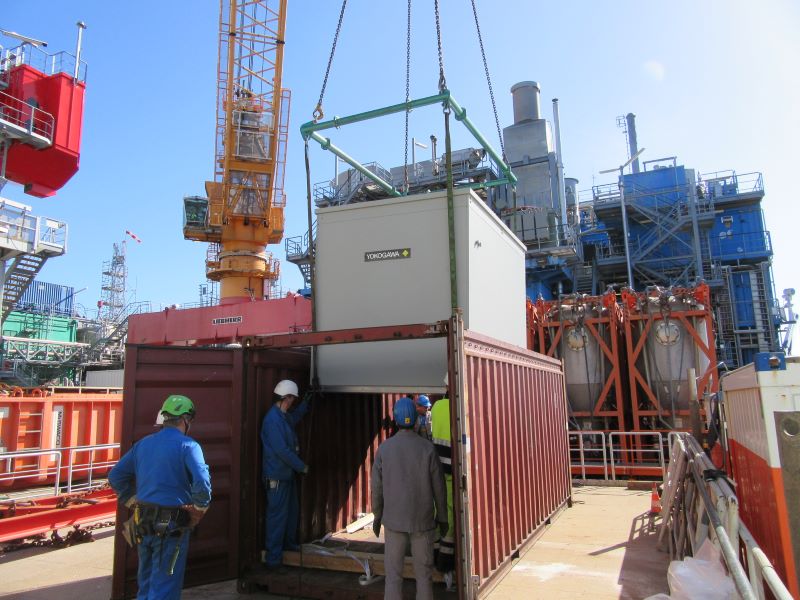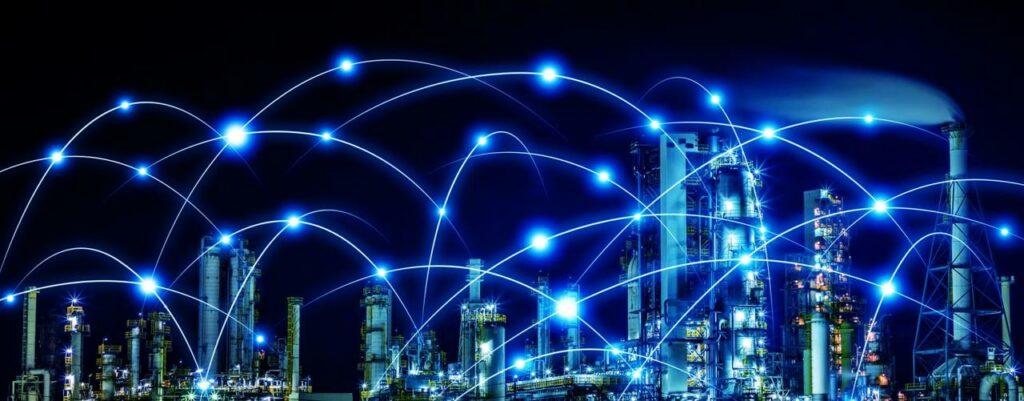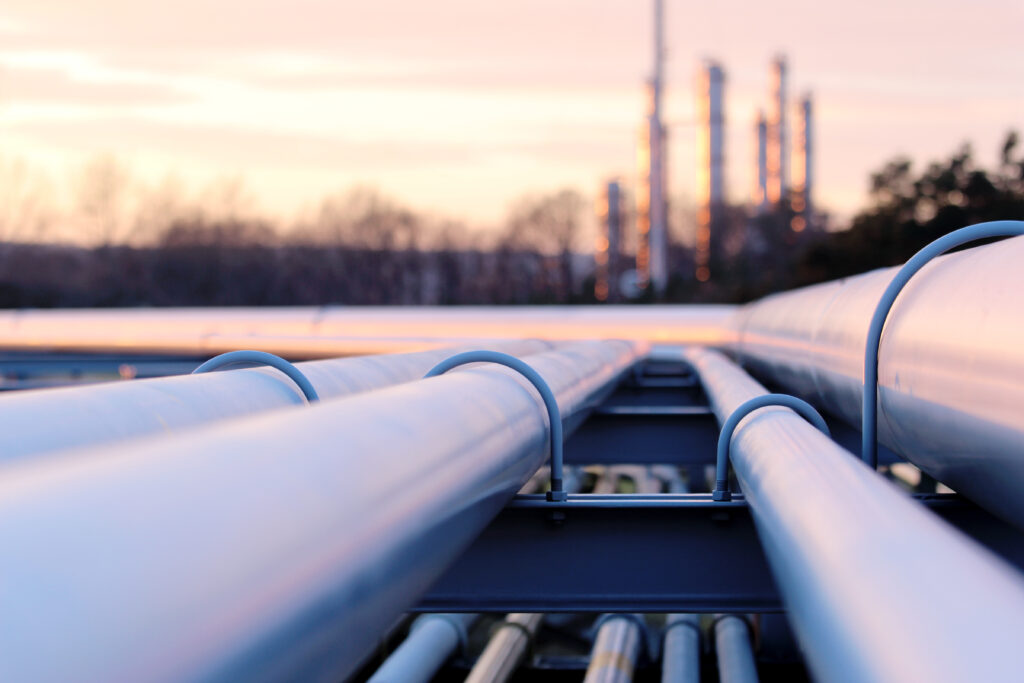For more than 30 years, oil has been produced on the Mittelplate at the southern edge of the Schleswig-Holstein Wadden Sea National Park.
It was initially transported to the coast on specially built ships, but since 2005 this has been done via a tenkilometre stainless steel field pipeline. The location of the production platform on a sand bank in a national park means that the strictest environmental protection and safety regulations apply. Strict compliance with these regulations has been part of everyday life on the Mittelplate since its very beginnings.
Virtually continuous monitoring to protect against stress corrosion
The mix of oil and water that is produced is divided into separators on the production platform itself. The gas that is not used to drive the platform’s gas turbines is compressed and injected into the field pipeline to the land station, where it is separated again and transferred on. It contains over 60% methane, around 25% light hydrocarbons (C2-C4), and around 6% nitrogen as well as small amounts of corrosive gases such as carbon dioxide, oxygen, and sulphurous gases. At higher concentrations, these can cause stress corrosion in stainless steel. Any leakages involving oil and gas could endanger the safety and the environment. That’s why monitoring the pipelines is the top priority.
According to official requirements, the corrosiveness of the carrier gas must be checked on a regular basis. Until the analysis container was constructed, this took place every six months by taking a manual measurement. The operator Wintershall Dea Deutschland found this to be inadequate. “The composition of the carrier gas may change in the short term, depending on the production schedule and the separation conditions. So we wanted to establish a frequent monitoring process”, explains Fabian Ehlers, electrical engineer at the Holstein oil production unit of Wintershall Dea Deutschland. “Construction of an analytical measuring system to detect components responsible for stainless steel corrosion” was the somewhat unwieldy name of the project.
A gas analysis system for this purpose was ordered in 2012 and installed on the Mittelplate. However, this UV-photometric solution was never able to meet expectations in terms of functionality and reliability.
So in 2015, the operator made a second attempt. A combination of gas chromatography and electrochemical oxygen measurement was intended as a reliable solution to this analysis task. “It was important for us to obtain a complete solution from a single source that covered all the requirements”, says Ehlers, describing the goal.
Custom solution required
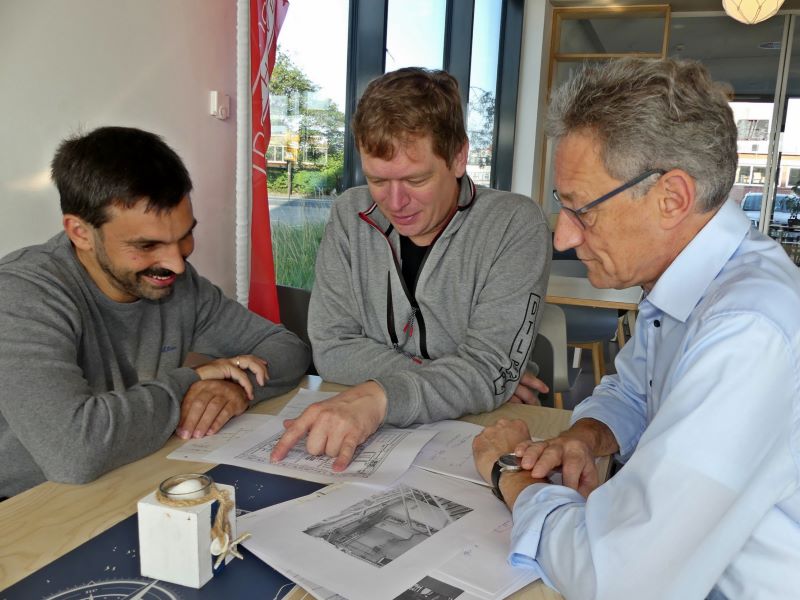
“We came under consideration as one of several possible suppliers for the analysis solution”, recalls Werner Worringen, Marketing Manager for Analytical Solutions at Yokogawa. Following initial discussions, an onsite meeting was quickly arranged on the Mittelplate in summer 2015. His colleague Sascha Gölz, Service Engineer for Analytical Solutions, was initially impressed by the tight spatial conditions. “It quickly became clear to me that we needed a custom analysis container that was as compact as possible and could also withstand the rugged environmental conditions”, he says. Just a few weeks later, when a detailed overall quotation was submitted that was also attractive from a cost perspective, Ehlers was initially surprised: “Yokogawa developed a custom solution and incorporated its own ideas – a supplier that listens and thinks proactively. That’s what ultimately convinced us.” As Gölz emphasises: “It was obviously a team effort that our partner companies also made crucial contributions to.”
In that same year, a contract was awarded to build an analysis container with a surface area of just six square metres. In May 2016, this analysis container was transported by ship to the production platform and set up. Its analytical core is formed by a gas chromatograph from the Japanese company, together with the oxygen measuring device and the upstream compressor measuring gas cooler.
“The fact that we had the container made out of glassfibre-reinforced plastic rather than special corrosion-resistant steel – contrary to the original tender offer – was fundamental to our success”, explains Gölz. This removed the need for any complex and expensive welding work on the Mittelplate when attaching the container roof, which had to be removed before installation for space reasons. “We had only a few centimetres of leeway in height”, recalls Ehlers.
The analysis container was lighter than the steel variant and did not require a complex coating. Plate heat exchangers integrated into the roof of the container, which were connected to a cooling circuit that is also used for the central control room of the production platform, make an electrical climate-control system unnecessary. “This results in further cost benefits in terms of procurement and operation and saves on investment in explosion protection”, explains Worringen. A heating element and air supply ducts for overpressure ventilation are also integrated into this roof.
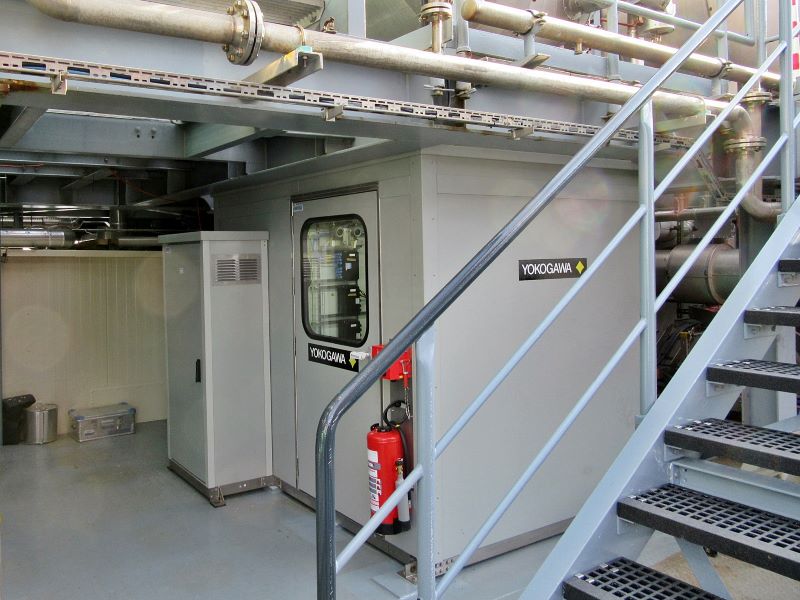
Precise measured values in four-minute cycles
An isokinetic measuring gas sampling probe ensures continuous and representative sampling in the carrier gas pipeline. The gas is supplied to the analysis container via a heated pipeline. The analysis system was commissioned in October 2016 and is connected to the Centum VP control system, which also has a safety-instrumented Prosafe RS controller to support it. It supplies precise measured values roughly every four minutes. The analysis unit has also proven its worth in multi-year operations in the offshore environment. It undergoes routine maintenance twice a year, which primarily relates to the filter elements for sample preparation and the electrolytic hydrogen production for the flame photometric detector (FPD). As the latter has a non-redundant design, there are two 50-l compressed gas cylinders as a backup solution in a cabinet attached to the analysis container. These cylinders enable continued operation for approximately three weeks.
“This was another suggestion from Yokogawa. We were initially critical because of the associated logistical requirements. But it has proven to be useful if the hydrogen generator actually fails”, explains Ehlers.
During the maintenance work, the GC measurement is also recalibrated with standard gas mixtures. The packed columns used are very robust and have been in service for more than three years. Aside from on-premise work, Gölz can access the analytical unit via VPN following authorisation. “That means we can resolve smaller problems quickly and easily together with the operating personnel – without making an expensive trip to the site”, he explains.
Continuous improvement and expansion
“Even when a system is functional, there are still things about it that can be improved”, adds Gölz. For example, pneumatic Teflon control lines were initially installed in the sample preparation area, which causes no problems at the normal operating temperature of 85°C. However, these connections have since been replaced by metal pipelines to provide higher temperature resistance without any damage and with more reliable protection against leakages. The temperature control system has also been further improved.
The noise level caused by the overpressure ventilation in the container – which was required for occupational safety and system protection reasons – was rather disruptive. “Even though hardly anyone needed to work in the container for long periods – except for me during maintenance – we found a solution”, says Gölz. An additional pressure reducer installed in the air supply duct will soon be correcting this problem.
A combined compressor was also recently put into operation on the Mittelplate. It can provide carrier gas pressure levels both for turbine operation and for pure injection into the field pipeline. In the future, the separate gas supply for this line will also be monitored by the tried-and-tested analytical system. A second sampling device has already been installed for this purpose.
Depending on the operating status, this can be activated and controlled by the control system. “We have been convinced by the analytical system from the design right through continuous operation, which has been running for several years. It’s impressive how robust such a sensitive measuring setup of this kind can be”, says Ehlers, summing up his experiences.
This article was originally published in German in Chemie Technik, edition 05/20.
Picture credits: Wintershall Dea and Dr.Thomas Schmidt
